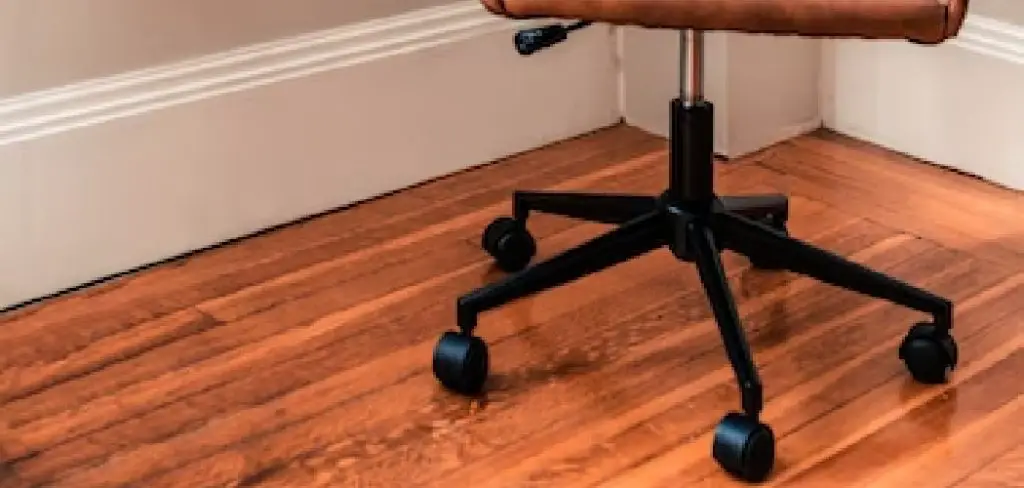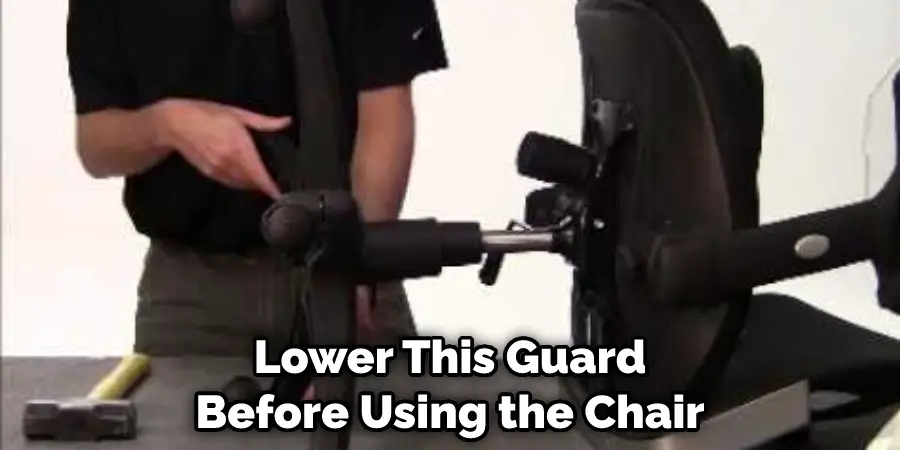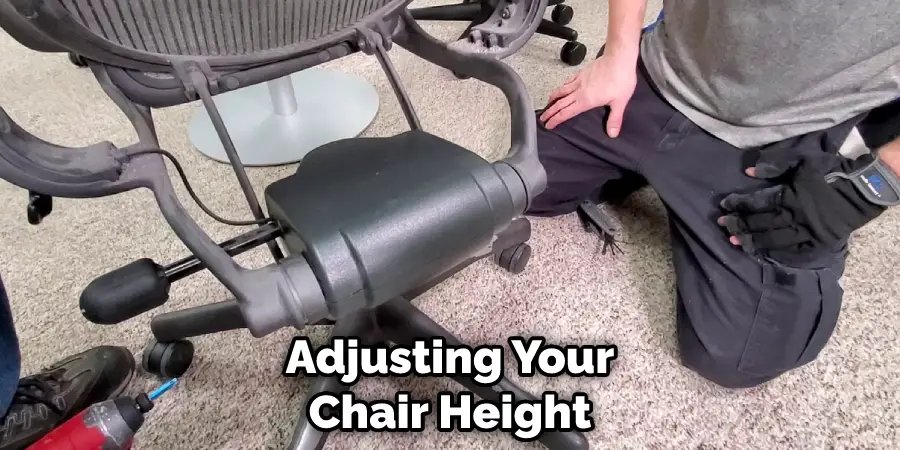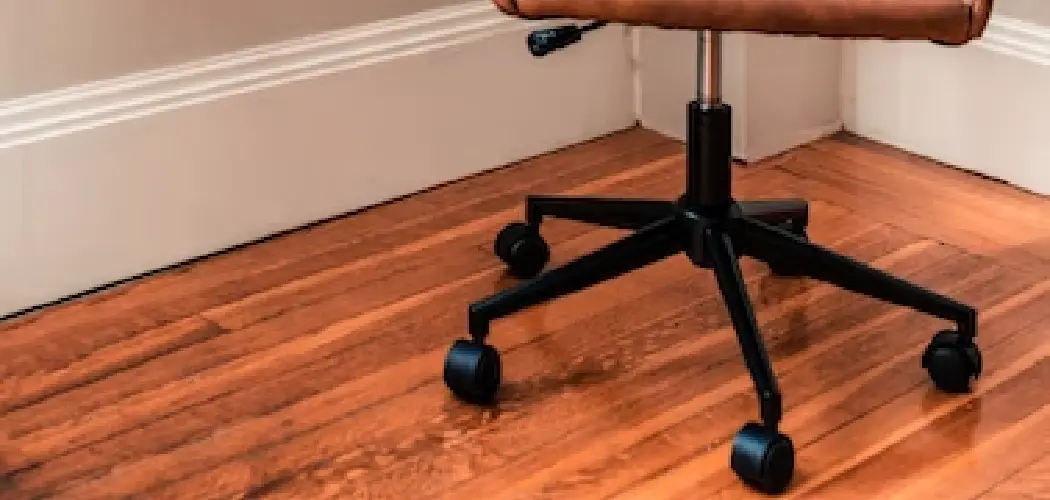A chair gas cylinder is a mechanism that allows an office chair to rise and lower in height. Inside the cylinder, there is a piston connected to a piston rod, which works with a series of seals, springs, and valves.
As you turn the knob on the side of your chair or press down or up on the armrests, the air is either let in or out of the cylinder, raising or lowering the height of your chair.

The biggest advantage of using a gas cylinder in an office chair is its adjustable height. You can raise or lower the seat to your desired height by simply pushing down on the lever at the base of the chair. This allows for customized ergonomics as well as more comfortable seating.
Gas cylinders provide smooth and consistent lift, making it easy to adjust the chair’s height with little effort. Additionally, gas cylinders are known for their durability and longevity, as they can last up to 10 years when properly cared for. You can find step-by-step instructions on how does office chair gas cylinder work in this blog article.
Step-by-step Instructions for How Does Office Chair Gas Cylinder Work
Step 1: Inspect Your Chair
Before beginning this project, make sure you have the right chair. Look for a cylinder attached to your office chair, typically located at the bottom of your seat or backrest.
How much pressure will depend on the model of your office chair and how high or low you want the chair to sit. Consult your chair’s manual or contact the manufacturer for this information, as this varies between brands and models.
Step 2: Locate the Gas Cylinder
Identify where your office chair’s gas cylinder is located. Generally, it will be located either at the bottom of the seat or backrest and can usually be identified by its plastic or metal construction and a lever-like handle. The gas cylinder will likely have nuts or screws connecting it to the chair, so you’ll need a screwdriver or wrench to detach it.

Step 3: Remove the Gas Cylinder
Using the appropriate tool, carefully unscrew and remove the gas cylinder from your office chair. This will help you get an idea of the current pressure in the cylinder. Be careful not to let the pressure out too quickly, as this could cause the chair to become unstable.
Step 4: Adjust the Pressure
Now that you’ve removed the gas cylinder adjust the pressure according to your desired height and comfort level. To do this, use an air compressor or hand pump to add or remove air from the cylinder. Make sure to keep track of how much pressure you add or subtract, as too little or too much can be dangerous.
Step 5: Reinstall the Gas Cylinder
Once you have adjusted the pressure, reattach the gas cylinder to your office chair and securely tighten it using your screwdriver or wrench. Before you sit in the chair, test it out by pushing down on it with your hand to see if it adjusts properly and holds the desired pressure level.
Step 6: Lower the Gas Cylinder Guard
Office chairs have a gas cylinder guard to protect you from possible injury if the chair’s gas cylinder unexpectedly releases. Make sure to lower this guard before using the chair, as it should be at the same level as your seat for maximum protection.
Now that everything is secured and adjusted properly, you can sit down in your office chair and enjoy the perfect height and comfort level you have achieved.

Step 7: Check Pressure Level Regularly
Remember to check the pressure level of your office chair’s gas cylinder regularly, as air can escape over time and leave you with an uncomfortable seating experience.
Tips for How Does Office Chair Gas Cylinder Work
- Always check the gas cylinder for any visual damage before use to ensure it is safe.
- Check the instructions on your chair and ensure you understand how to properly adjust the tension of the gas cylinder correctly based on your weight and size.
- Make sure to periodically inspect the components of your chair, such as the gas cylinder, to ensure they are functioning properly.
- Always use a certified office chair technician to replace or repair any parts of your chair that are not working correctly.
- Be mindful of how much weight you are putting on the chair, and never try to overload it beyond its capacity. This can lead to damage to the gas cylinder or other components.
Update your chair regularly to ensure that it is functioning safely and efficiently. It’s also important to keep up with regular safety checks, even if you don’t notice any potential problems.
How Often Should an Office Chair Gas Cylinder Be Replaced?
Office chair gas cylinders are an important part of a comfortable office chair and should be replaced when they no longer provide the proper support. It is recommended that you replace your office chair’s gas cylinder every two to three years, depending on its usage.
Additionally, if your office chair has been in storage for an extended period of time without use, it is best to replace the gas cylinder as soon as you start using it again.
To determine if replacing your office chair’s gas cylinder is necessary, sit in the office chair and lean back slightly. If you feel a sudden drop or sinking sensation, this indicates that the gas cylinder needs to be replaced. You should also look at the gas cylinder to ensure there is no visible corrosion, which could indicate a defective part.

How Can a Person Tell When an Office Chair Gas Cylinder Needs to Be Serviced?
When an office chair gas cylinder needs to be serviced, there are several signs that the user can look out for. One sign is a “sinking” feeling when sitting in the chair—the gas cylinder has weakened and needs to be replaced or refilled.
Additionally, it is likely time to service the gas cylinder if there is any difficulty getting into or out of the chair. The gas cylinder can also become noisy when it needs servicing; once the user hears a creaking or rattling noise from the chair, the gas cylinder should be serviced immediately.
Regular maintenance should also be performed to keep an office chair functioning properly and prevent unneeded repairs. This includes checking the gas cylinder for any signs of damage or wear and tear, ensuring that it is properly lubricated, and ensuring there are no clogs in the system.
If any of these issues are found, they should be addressed before attempting to service the gas cylinder.
How Much Does an Office Chair Gas Cylinder Typically Cost?
The cost of an office chair gas cylinder depends on its size and the quality of materials used. Generally, a standard-sized cylinder will cost between $30-$50. Higher-end models can range anywhere from $64 up to about $100, depending on their features and build quality.
For an ergonomic solution, prices can range from $125 to $ 200. The type of cylinder you choose will also have an effect on the overall cost since heavier or more durable cylinders tend to be pricier.
How Long Should an Office Chair Gas Cylinder Last?
The lifespan of an office chair gas cylinder largely depends on your chair’s quality and how frequently it is used. Generally, a well-made gas cylinder should last for up to 8 years. A cylinder fails before this may be due to inferior construction or improper usage. Poor maintenance can also cause a gas cylinder to malfunction or fail prematurely.
To ensure the longevity of your chair gas cylinder, it should be regularly inspected and maintained. This includes inspecting for any visible wear and tear, cracks, or leaks in the cylinder cover, and ensuring the tightness of all screws and nuts.
If you notice any issues with your cylinder, it is best to have it replaced as soon as possible. Regular lubrication of the cylinder is also important, as this helps keep it running smoothly and prevents wear and tear.
Finally, ensure that you do not over-extend your gas cylinder when adjusting your chair height. Over-stretching can cause the seal between the piston and cylinder to break, making it difficult for the cylinder to reset properly and leading to leaks or a malfunction.

By following these simple tips, you can keep your office chair gas cylinder running smoothly and ensure its longevity.
Conclusion
The primary disadvantage of office chair gas cylinders is the fact that they are not adjustable. This can be a big problem if you need to adjust the height of your desk or chair for different tasks. It also means that you cannot customize the fit of your chair to match your individual build and size.
Additionally, office chair gas cylinders can restrict movement and make it difficult to swivel the chair around. This can be a problem if you must maneuver quickly to take advantage of different tasks. Also, gas cylinders can break down over time, requiring expensive repairs or replacement parts.
In conclusion, the gas cylinder in an office chair is a vital piece of furniture that provides support and adjustability. Hydraulics allows the user to raise or lower their seat by simply pushing down or pulling up on the lever underneath the seat.
The gas cylinders also help to protect against tipping over and make it easy to move the chair around. I hope reading this post has helped you learn how does office chair gas cylinder work. Make sure the safety precautions are carried out in the order listed.

